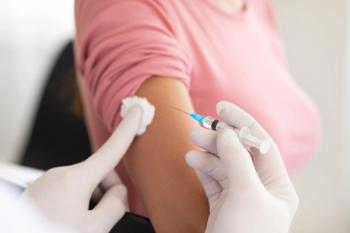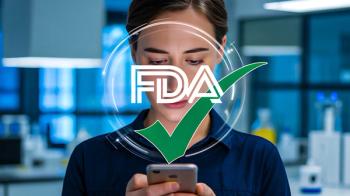
- Volume 0 0
Compounding Useful in Dermatology
The benefits of expanding dermatologic compounding in a pharmacy practice can be both rewarding and lucrative.
Ms. Fields is with the InternationalJournal of PharmaceuticalCompounding and is a pharmacytechnician at Innovative PharmacyServices in Edmond, Okla.
The practice of compounding haslong been a major part of dermatology—from cosmetics, toskin care, to custom prescriptions.Dermatologic preparations can foster asignificant amount of business forcompounding practices when commonlyused preparations areproperly marketed to localclinicians. Skin conditionssuch as acne, solarlentigines, psoriasis,and warts can oftenbe treated successfullywith the help ofan experienced compoundingpharmacist.
Acne
Acne vulgaris is often anembarrassing and uncomfortablecondition, characterized by the appearanceof pimples on the face, neck, ortrunk. When OTC treatments such asbenzoyl peroxide fail to clear up theproblem, topical compounds may providea viable alternative to systemictherapies such as isotretinoin or tetracycline.
Niacinamide gel has been reportedto provide relief in some patients withmoderate acne.1,2 A 4% niacinamide gelin water and propylene glycol, thickenedwith Carbopol 940 and trolamine,may be applied twice daily for thetreatment of mild-to-moderate acnevulgaris.
Studies have shown that for acnescarring, estriol 0.03% solution for iontophoresismay be effective in improvingthe appearance of the skin.3 Thismethod has been shown to improvethe appearance of atrophic acne scarsin patients, and the effects were stillpresent a year after the study ended.
Solar Lentigines and Skin Aging
Solar lentigines, also commonly referredto as age spots or liver spots, areareas of increased pigmentation broughtabout by exposure to sunlight or otherforms of ultraviolet light. These areasmay be treated effectively with compoundedpreparations such as bleachingcreams or topical estrogens.
Many dermatologistsprescribe topical bleachingagents containingcomponents such ashydroquinone, retinoicacid, and vitaminE in variouscombinations andstrengths, sometimeswith an added corticosteroid.Often thesepreparations are tailored tothe patient's needs, and compoundingis necessary.
Topical estrogens also may be usedin the treatment of age spots and mayimprove elasticity.4 Estriol, in particular,appears to have a significant positiveeffect on collagen, without the systemicside effects that may occur withthe use of stronger estrogens such asestradiol. Estriol may be prepared in atopical cream or gel typically ranging instrength from 0.5% to 2% to be applieddaily as directed.5
Psoriasis
Psoriasis is a common dermatologicproblem faced by approximately 2% ofAmericans. Symptoms typically includedry skin, which may be thickened orred with a scaly appearance, swelling,itching, and soreness. While commerciallyavailable treatments may beeffective for many patients, others withmore severe cases may require a specializedprescription available from acompounding pharmacist. In suchcases, a wide variety of options areavailable to the physician and thepatient without having to resort to systemictherapy.
One product that has proven successfulfor many patients is a preparationof zinc pyrithione 0.2% in a topicalspray or solution. Clobetasol 0.05%may be added to this compound andcan further enhance its effectiveness.6
Commonly used systemic medicationsalso may be converted to topicalforms to meet the needs of a patientwithout exposing the whole body tothe medication. Cyclosporin, a treatmentoption that is generally used systemically,has shown a degree of effectivenessin topical forms for the treatmentof psoriasis and may be preparedaccording to a doctor's specifications.7
Warts
Warts are a common infection causedby viruses in the human papillomavirusfamily. When OTC remedies fail, compoundingallows for a host of additionaltreatment options. For commonwarts, dinitrochlorobenzene or diphenylcyclopropenone(0.1% to 0.3%) maybe prepared in a lactic acid and salicylicacid base for home application.Other preparations such as trichloroaceticacid, 5-fluorouracil, cantharidin,and podophyllum may be prepared invarious vehicles and are typically preparedfor in-office treatment.
References
- Shalita AR, Smith JG, Parish LC, Sofman MS, Chalker DK. Topical nicotinamide compared with clindamycin gel in the treatment of inflammatory acne vulgaris. Int J Dermatol. 1995;34:434-437.
- Allen LV Jr. Niacinamide 4% acne gel. IJPC. 2001;5:49.
- Allen LV Jr. Estriol solution for iontophoresis for acne scars. IJPC. 1997;1:411.
- Schmidt JB, Binder M, Demschik G, Bieglmayer C, Reinder A. Treatment of skin aging with topical estrogens. Int J Dermatol. 1996;35:669-674.
- Allen LV Jr. Estriol 2-mg/mL topical gel. IJPC. 2002;6:299.
- Mason D, Carroll T. Case reports: Steroid substitute treatment for psoriasis. IJPC. 1999;3:34.
- Feliciani C, Tulli A. Topical cyclosporin in the treatment of dermatologic diseases. Int J Immunopathol Pharmacol. 2002;15:89-93.
- Allen LV Jr. Basics of compounding for the treatment of warts. IJPC. 2004;8:126-129.
Articles in this issue
about 18 years ago
Understanding the Metabolic Syndromeabout 18 years ago
LABOR DEPT SEES SLOWDOWN IN Rx COSTS, THANKS TO GENERICSabout 18 years ago
can you READ these Rxs?about 18 years ago
Case Studiesabout 18 years ago
compounding HOTLINEabout 18 years ago
HYPERTENSION WATCHabout 18 years ago
DIABETES WATCHabout 18 years ago
CHOLESTEROL WATCHabout 18 years ago
ASTHMA WATCHabout 18 years ago
ARTHRITIS WATCHNewsletter
Stay informed on drug updates, treatment guidelines, and pharmacy practice trends—subscribe to Pharmacy Times for weekly clinical insights.


















































































































































































































